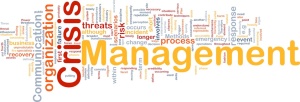Kathy Walter-Mack serves as the chief of staff at Metropolitan Community College in Kansas City, Missouri, where she also leads human resources projects and provides support to the College’s chancellor. In addition to those duties, Kathy Walter-Mack recently developed and implemented improved fiscal policies in her department. She also successfully negotiated the removal of the College from the American Asssociation of University Professors (AAUP) censure list.
More than three decades ago, Metropolitan Community College faced serious financial woes. To help balance the budget, the school was forced to lay off some full-time professors. This action caught the attention of the(AAUP),which placed Metropolitan Community College on its censure list.
The AAUP considered the community college’s actions to be threats to academic freedom and tenure. It places institutions on the censure list as a way to warn prospective professors and other professionals that tenure and academic freedom may not be respected satisfactorily. Schools are responsible for developing policies that improve conditions, and the AAUP reviews cases every two years. Metropolitan Community College was finally removed from the list in July 2016, 32 years after initially appearing there.

